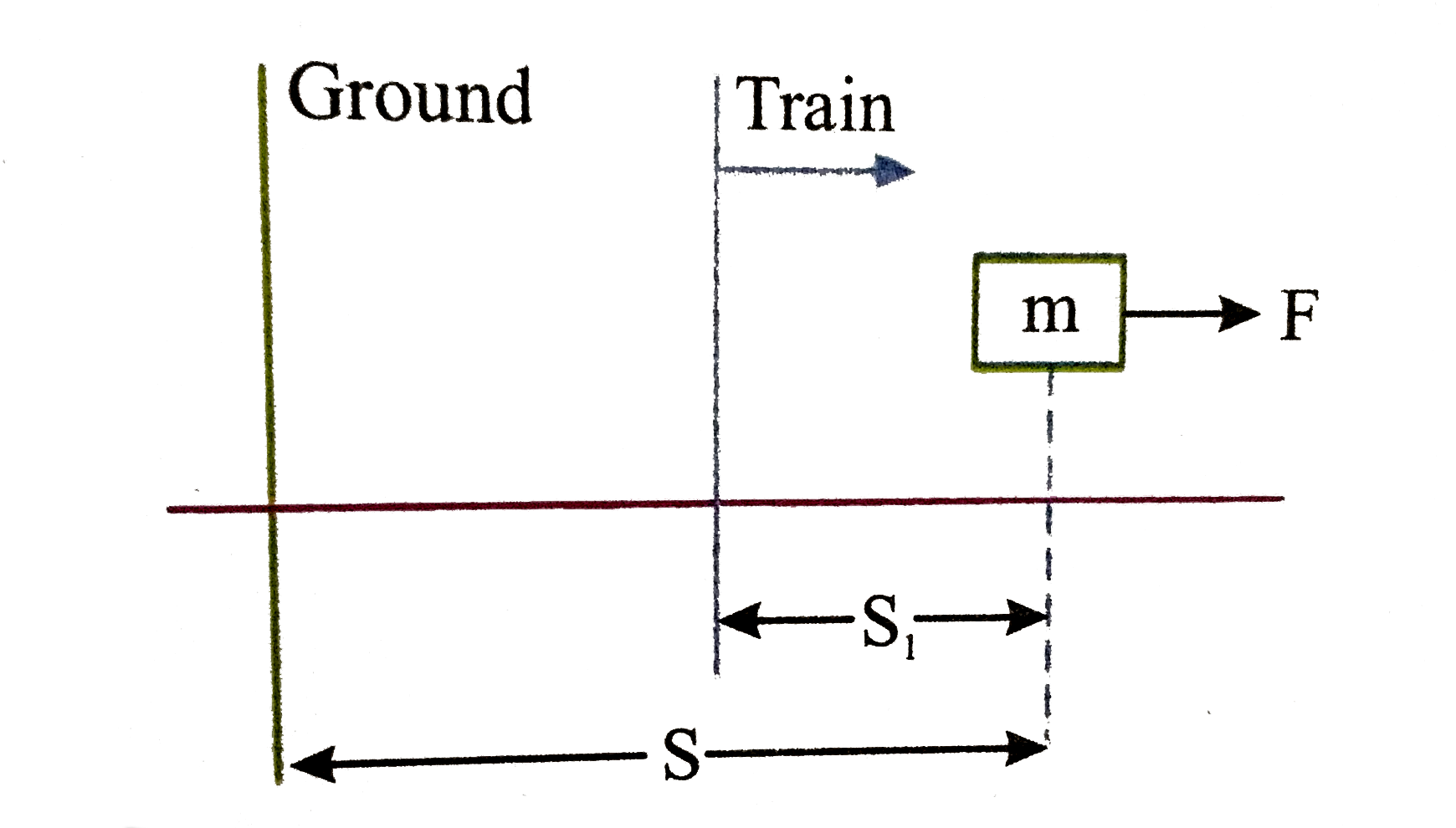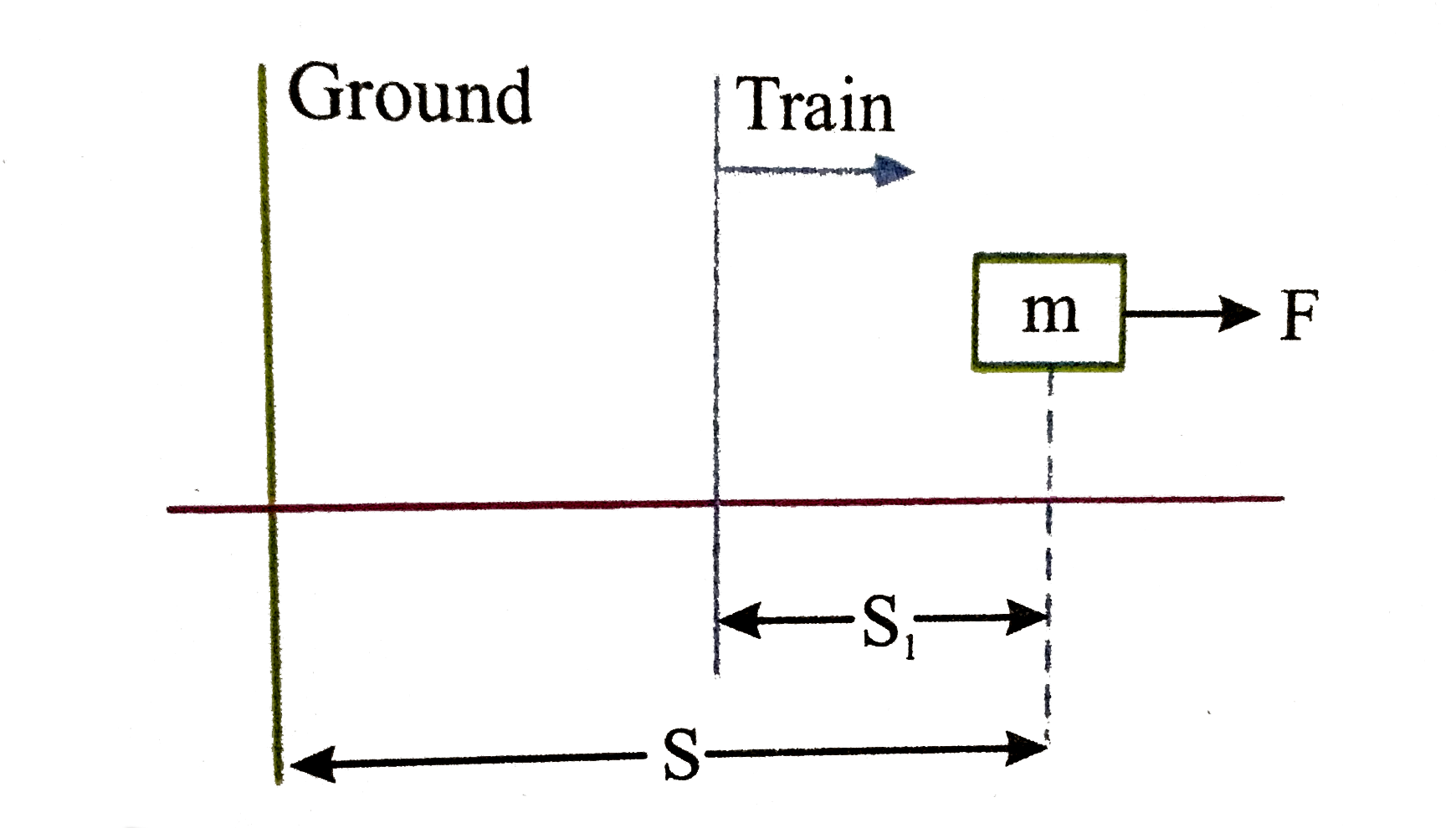A railroad car of mass M is at rest on frictionless rails when a man of mass m strts moving on the car towards the engine. If the car recoils with a speed v backward on the rails, with what velocity is the man aproaching the engine?
The correct Answer is:A
A railrod car of ma sM is at rest o frictionless rails when a man of mass m starts movng on the casr towards the engine. The car recoils with a speed v backward on the rails.
Let the mass moving with a velocity x w.r.t the engine.
∴ The velocity of the mass w.r.t earth is (x-v) towards right.
VCM=0(Initiallyatrest)
∴−0=−Mv+m(x−v)
→Mv=m(x−v)
→mx=Mv+mv
→x=(M+mm)v
=(1+Mm)v
Topper's Solved these Questions
- CENTRE OF MASS, LINEAR MOMENTUM, COLLISIONBOOK - HC VERMACHAPTER - CENTRE OF MASS, LINEAR MOMENTUM, COLLISIONEXERCISE - Objective 2
11 Videos
- CALORIMETRYBOOK - HC VERMACHAPTER - CALORIMETRYEXERCISE - Exercises
18 Videos
- CIRCULAR MOTIONBOOK - HC VERMACHAPTER - CIRCULAR MOTIONEXERCISE - Exercises
30 Videos
Similar Questions
A flat car of mass m is at rest on a frictionless floor with a child of mass m standing at its edge. If the child jumps off from the car towards right with an initial velocity u, with respect to the car, find the velocity of the car after its jump.
View Solutiona. A rail road flat car of mass M can roll without friction along a straight horizontal track . Initially, a man of mass m is standing on the car which is moving to the right with speed v0. What is the change in velocity of the car if the man runs to the left so that his speed relative to the car is vrel just before he jumps off at the left end?
b. If there are n men each of mass m on the car, should they all run and jump off together or should they run and jump one by one in order to give a greater velocity to the car?

View Solution
Knowledge Check
A block of mass m sits at rest on a frictionless table in a rail car that is moving with speed vc along a straight horizontal track (fig.) A person riding in the car pushes on the block with a net horizontal force F for a time t in the direction of the car's motion.

What is the final speed of the block according to a person in the car ?AFtmB2FtmC−FtmDzeroA man of mass m stands on a long flat car of mass M , moving with velocity V.If he now begins to run with velocity u, with respect to the car , in the same direction as V, the the velocity of the car will be
AV−mu/MBV−mu/(m+M)CV+mu/(m+m)DV−u(M−m)/(M+m)A block of mass m sits at rest on a frictionless table in a rail car that is moving with speed vc along a straight horizontal track (fig.) A person riding in the car pushes on the block with a net horizontal force F for a time t in the direction of the car's motion.

According to a person standing on the ground outside the train ?AVc+FtmBVc−2FtmCFtm−VcDzero
A railroad flatcar of mass M can roll without friction along a straight horizontal track. Initially, a man of mass 'm' is standing on the car, which is at rest. What is the velocity of the car if man runs to the left so that his speed relative to the car is vrel.
View SolutionA car of maas M is moving on a horizontal circular path of radius r. At an instant its speed is v and is increasing at a rate a.
View SolutionA block of mass m sits at rest on a frictionless table in a rail car that is moving with speed vc along a straight horizontal track (fig.) A person riding in the car pushes on the block with a net horizontal force F for a time t in the direction of the car's motion.

According to the person on the ground. The displacement of block is
View SolutionA block of mass m sits at rest on a frictionless table in a rail car that is moving with speed vc along a straight horizontal track (fig.) A person riding in the car pushes on the block with a net horizontal force F for a time t in the direction of the car's motion.

According to the person on the ground. The change in KE of block is
View SolutionA block of mass m sits at rest on a frictionless table in a rail car that is moving with speed vc along a straight horizontal track (fig.) A person riding in the car pushes on the block with a net horizontal force F for a time t in the direction of the car's motion.

In terms of F,m & t, how far did the the force displace the object according to the person in car ?
View Solution
